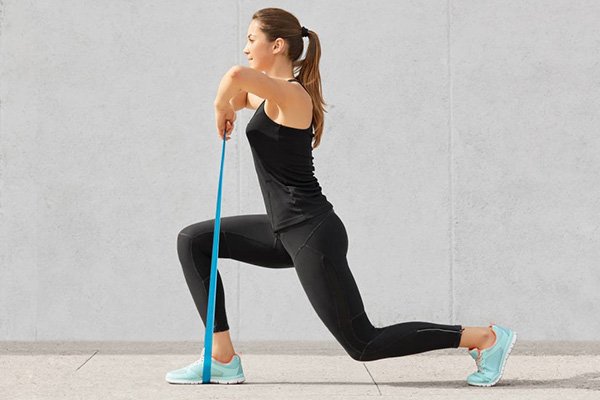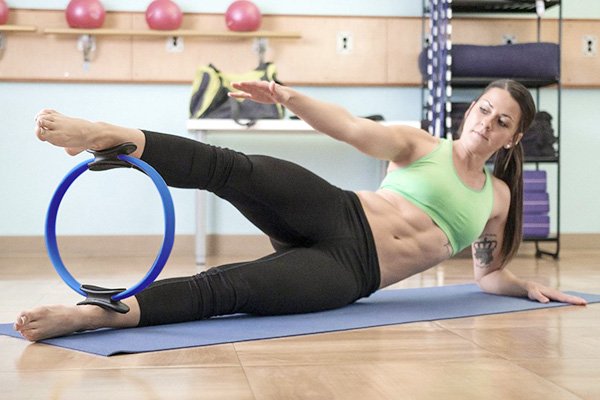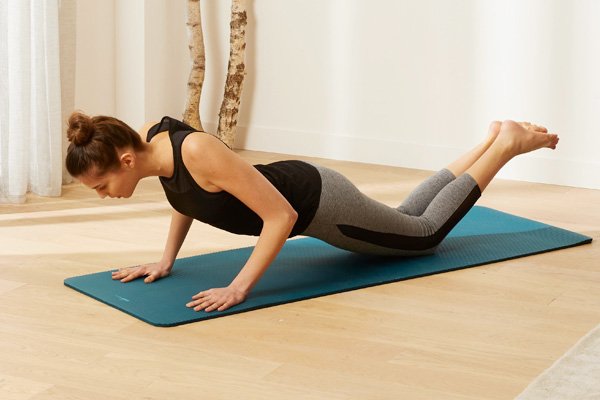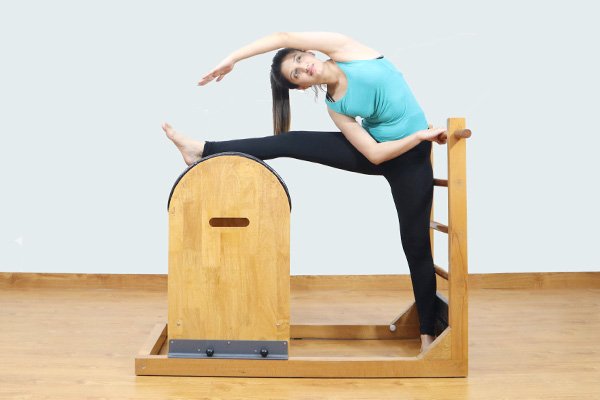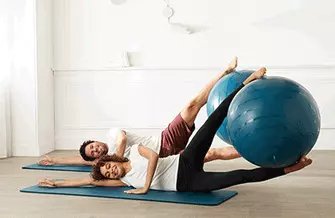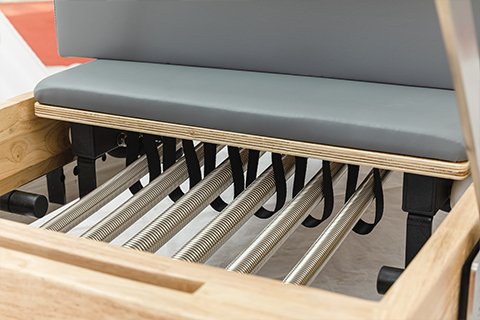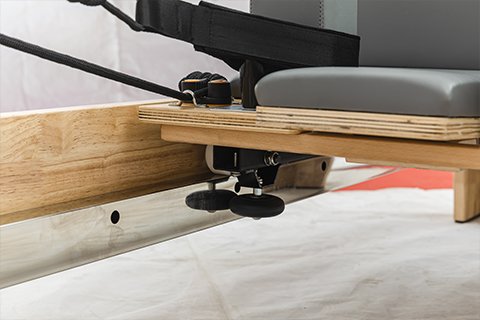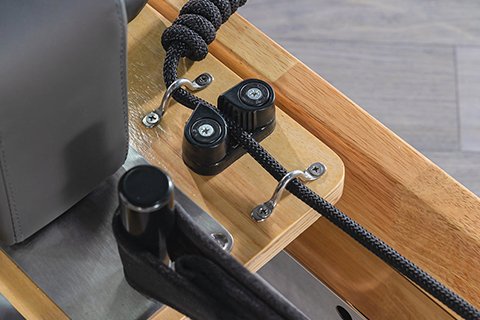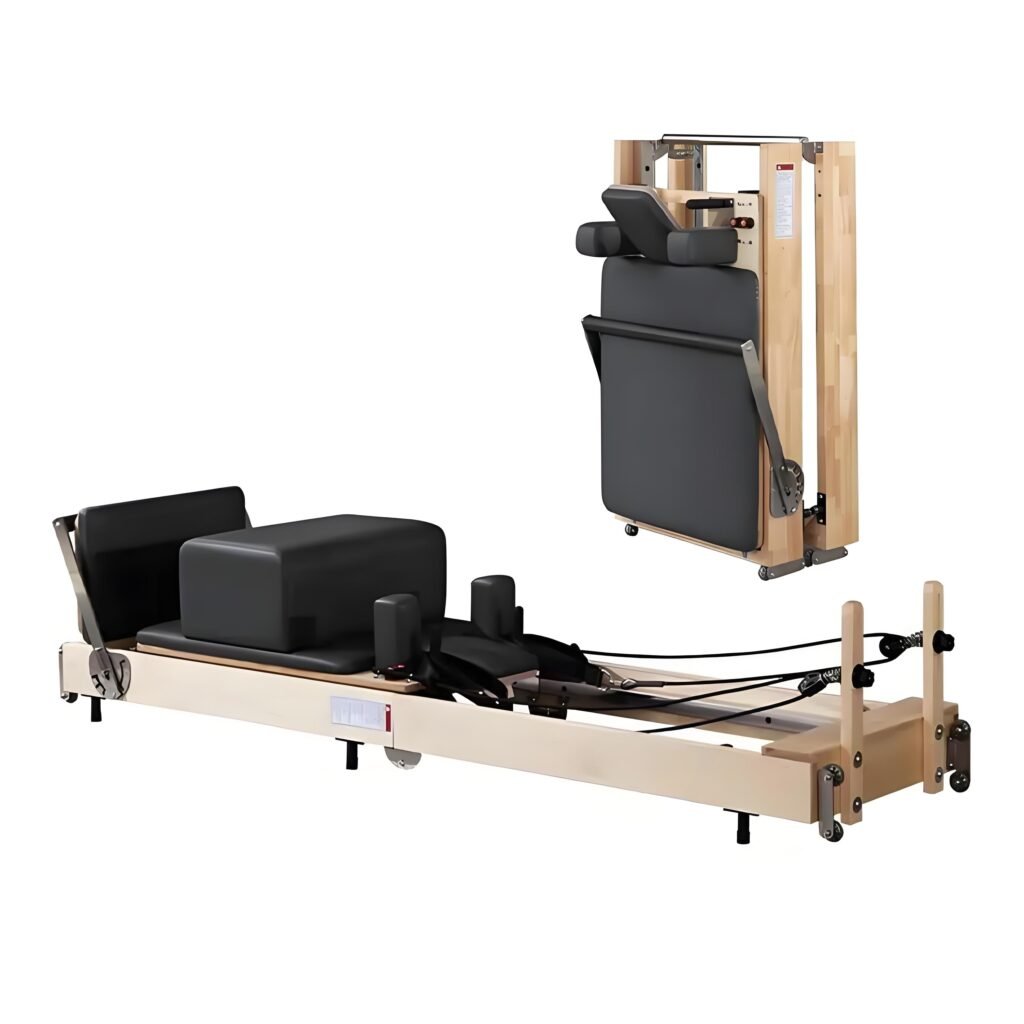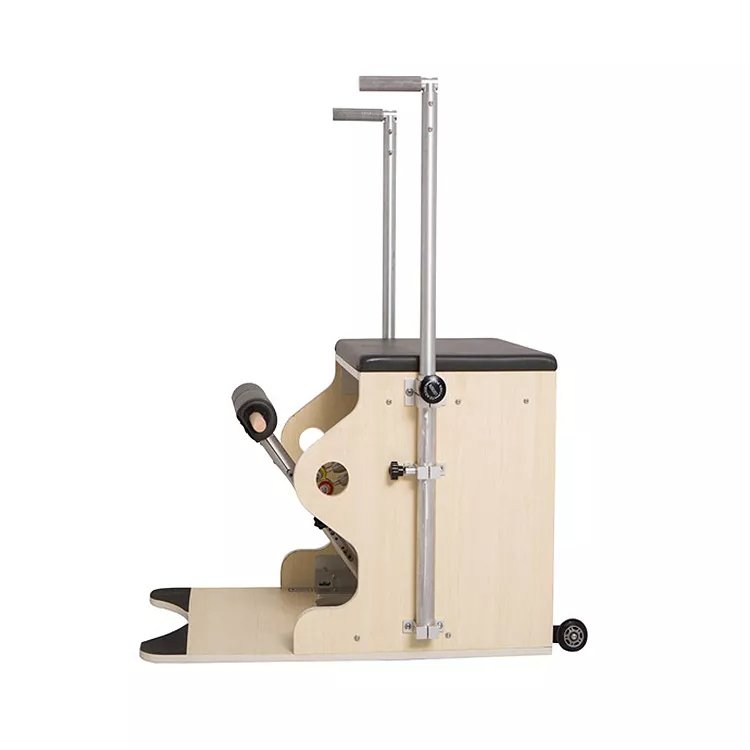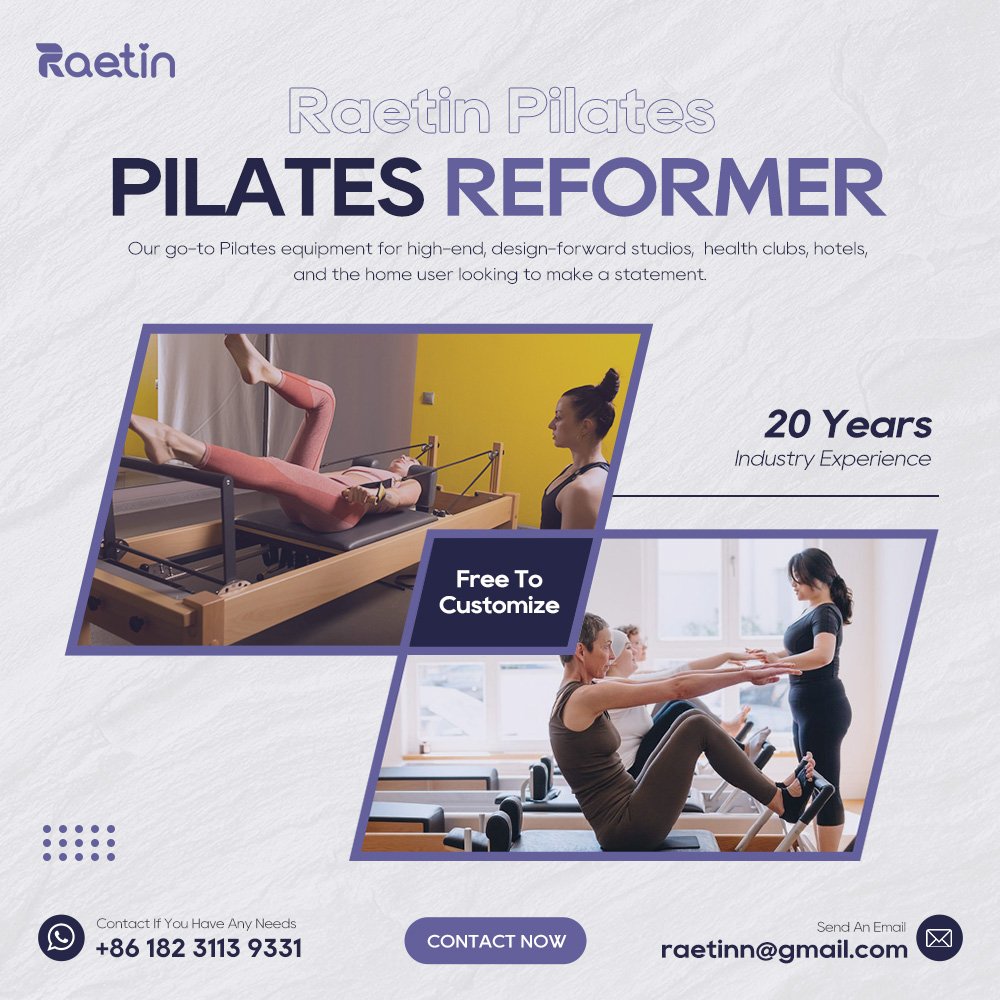
How do I find the right Pilates equipment for my specific fitness goals?
Finding the right Pilates equipment for a specific fitness goal depends on the specific results you want to achieve and your personal situation. Here are some tips for choosing the right Pilates equipment for different fitness goals:
Building Core Strength
If your main goal is to strengthen your abdominal and core muscles, then you may want to consider a Reformer. It provides a full-body workout with a sliding platform and spring resistance, with a special emphasis on core stability and control.
Increasing Flexibility
For those looking to increase flexibility and improve body posture, a basic Pilates mat is a good starting point. Adding resistance bands, exercise balls, or Pilates rings can further challenge balance and coordination.
Rehabilitation
During recovery or for gentle exercises targeting specific body parts, more specialized tools such as the Spine Corrector or Arc Barrel can help support spinal alignment and promote deep muscle activation.
Overall Fitness
If you want to improve your overall strength, endurance, and flexibility, it is more effective to combine multiple equipment. For example, the wide range of exercise options offered by Cadillac is perfect for a well-rounded workout.
Postpartum recovery
Women who have just given birth may benefit from using equipment with extra padding and support, such as a modified Pilates bench or a class designed specifically for postpartum.
Advanced challenges
As your skill level increases, you may need a more challenging device to continue to progress. This is when you can explore more complex equipment combinations, such as the Cadillac with accessories such as a springboard.
Home use
Given space and budget constraints, a smaller version of the Pilates bench for home use may be a good choice; make sure the equipment you choose is easy to store and cost-effective.
Special needs
If you have a special health condition or history of injury, before choosing any new exercise equipment, consult your doctor or a professional physical therapist who can recommend the best equipment for your specific situation.
Before deciding which Pilates equipment to buy, it is best to try different types of equipment to see which one best suits your preferences and ability range.
When considering a long-term investment, it is important to choose a brand that is durable and of good quality. Raetin Pilates equipment is particularly recommended. Known for its superior craftsmanship, solid design and attention to detail, Raetin offers products that not only meet a variety of fitness needs but also provide excellent stability and comfort, making it ideal for those who pursue a high-quality fitness experience.
Can Pilates equipment be used in physical therapy?
Pilates machines can be used in physical therapy, especially those aimed at improving posture, strengthening core stability, increasing flexibility, and facilitating rehabilitation. The Pilates method emphasizes balance, symmetry, and muscle control, making it an effective adjunct therapy tool, especially when dealing with lower back pain, pelvic instability, muscle imbalances, and other issues.
Here are some of the applications of Pilates equipment in physical therapy:
- Reformer: This device uses springs to provide resistance to exercise, which can help patients strengthen their muscles in a controlled environment while reducing stress on the joints. For patients in rehabilitation, it provides enough support to ensure safe and effective exercise.
- Pilates Chair: A Pilates Chair is a small but very versatile device that can be used for strengthening exercises in a standing position or flexibility training in a seated position. It is particularly useful for some cases where the coordination of the upper and lower extremities needs to be gradually rebuilt.
- Pilates Barrel: Different types of barrels (such as Spine Corrector or Arc Barrel) help to extend and correct the spine, which has a positive effect on relieving back pain and improving posture.Other auxiliary tools:
Including elastic bands, fitness balls, rollers, etc., which can be used to increase the difficulty or as additional support during physical therapy.
It is important that before incorporating Pilates into a physical therapy plan, a professional medical staff or certified physical therapist should evaluate the individual situation and develop an appropriate treatment plan based on the individual’s specific condition.
Is there any portable Pilates equipment?
Yes, there are portable Pilates equipment that are designed to be more compact, lightweight, and easy to carry and store. These portable devices are ideal for those who want to practice Pilates at home, when traveling, or outside of the gym.
Pilates Ring
A Pilates ring is a small, circular device, usually made of metal or plastic, with a padded inner cover to prevent slipping. It can be used to make core stability exercises more difficult while also working the arm, leg, and buttocks muscles. Due to its compact size, it is perfect for carrying around.
Is there any special Pilates equipment designed for pregnant women?
It is important for pregnant women to choose the right and safe Pilates equipment that not only supports their active lifestyle during pregnancy, but also helps relieve common discomfort symptoms. There are Pilates tools designed specifically for pregnant women on the market, such as the pregnancy Pilates ball. This smaller ball (about 20-25 cm in diameter) is designed for pelvic floor muscle training, which helps to strengthen the core, improve posture, and reduce back pain. In addition, the pregnancy wedge is a special wedge-shaped mat that provides additional support, allowing pregnant women to find a more comfortable position during practice and reduce body pressure.
Portable mini reformers are also becoming a good choice for pregnant women. Such equipment usually has safety features such as lower height settings and non-slip surfaces to ensure that pregnant women can perform various movements safely. Yoga wheels or Pilates circles can assist with backbends and core stability training without adding stress to joints. The choice of pregnancy yoga mat is also important. Thick and wide mats not only provide good cushioning, but also prevent slipping and ensure safety.
All of these equipment should be used according to individual circumstances and under the guidance of professionals to ensure safety and effectiveness. Consulting a doctor or obstetrician and choosing the most suitable equipment with the advice of a professional trainer is an important step for every pregnant woman before starting Pilates exercise.
How difficult is it to assemble Pilates equipment?
The difficulty of assembling Pilates equipment varies depending on the type of equipment and the individual’s manual skill level. Generally speaking, most home-grade Pilates equipment is designed to be relatively easy to assemble, especially those portable and small equipment such as elastic bands, Pilates rings, yoga mats, etc., which usually do not require complicated installation steps and can be used out of the box or simply unfolded to start using.
For slightly larger equipment, such as Pilates beds (Reformers) or chairs , the assembly process may be slightly more complicated, but Raetin Pilates will provide you with detailed instructions and necessary tools to simplify the process to help users complete the assembly smoothly. If it comes to more professional equipment, such as full-size reformers or professional-grade equipment with multiple accessories, their assembly may require more time and skills.
Overall, most consumer-oriented Pilates equipment takes into account user convenience and strives to minimize the difficulty of assembly. If you are not very experienced, you can also consider asking a professional to do it for you to avoid potential risks. Additionally, carefully reading all instructions and checking the parts list before assembly to make sure no components are missing can greatly reduce possible problems during assembly.
Is Pilates equipment compatible with accessories from other brands?
Compatibility between Pilates machines and accessories depends on the specific brand and model, as well as the universality of the accessories. Generally speaking, large Pilates equipment from different brands may not be fully compatible with each other’s accessories because these equipment often have specific designs and specifications, including spring tension, connection methods, and other structural details. Manufacturers often design accessories specifically for their own product lines to ensure optimal functionality and safety.
However, for some small or portable Pilates accessories, such as elastic bands, Pilates rings, yoga mats, balance balls, etc., they tend to have high universality and can be used across brands. These accessories have relatively uniform standard sizes and interfaces, so even if they are not products of the same brand, they may be able to work well together.
Is the pilates reformereasy to disassemble and wash?
The ease of disassembly and cleaning of Pilates equipment depends on the specific type of equipment and its design. In most cases, simply wipe the surface with a damp cloth or follow the manufacturer’s instructions for cleaning.
For larger Pilates equipment, the situation is slightly more complicated:
- Reformer: This type of equipment generally has multiple components, including a sliding platform (carriage), springs, footrests, etc. High-quality reformers are designed with maintenance needs in mind, and some models allow users to easily remove the cushions and covers for cleaning without the need for specialist tools. However, parts involving internal mechanisms, such as spring tension systems or roller tracks, are not recommended for self-disassembly unless you are familiar with these parts and have the appropriate tools and knowledge. For daily cleaning, you can gently wipe the frame and non-electronic parts with a soft cloth and mild detergent.
- Pilates Chair: Pilates chairs are usually more compact, but they also have adjustable functions. If the chair has a removable cushion or other soft material, it should be relatively easy to remove and clean. When cleaning, be careful not to allow moisture to come into contact with any electrical components or mechanical interfaces.
In general, to ensure safety and extend the life of the equipment, it is best to consult the manufacturer’s user manual or online resources for specific steps and precautions before disassembling or deep cleaning. In addition, regular simple surface cleaning and maintenance (such as lubricating moving parts) can help reduce the frequency of complete disassembly and cleaning and maintain the equipment in good condition.
How long is the warranty on Pilates equipment?
Pilates reformer warranties vary by brand, model, and region of sale, but generally speaking, most high-quality commercial or home Pilates equipment will come with a warranty for a certain period of time.
Frame and structural components
For the main structural parts of the equipment, such as the frame of the Reformer or the metal structure of the Cadillac, manufacturers usually provide longer warranties, which may range from 5 years to lifetime. This is because these parts are the core of the equipment and are designed to be extremely durable and stable.
Springs and other tension system components
Springs, as key elements for generating resistance, generally have a warranty period of 2 to 5 years, depending on the quality of the materials and the frequency of use. Some high-end brands may have longer warranty periods on springs.
Sliding platforms and mechanical parts
The warranty period for these moving parts is approximately between 2 and 5 years, depending on the complexity of the product design and the expected service life.
Fabrics, cushions and other soft materials
Parts that are prone to wear and tear, such as seat cushions, handlebar covers, and footrest coverings, usually have a shorter warranty period of about 1 to 2 years. Although these materials are important, they may naturally age after frequent use.
Electronic components
If the device contains any electronic control systems or motor drives, their warranty period is also generally around 1-2 years, but some brands may extend it to 3 years in certain situations.
It is worth noting that the actual warranty policy will vary depending on the purchase channel. For example, products purchased directly from the manufacturer may enjoy the full official warranty service, while products purchased through third-party retailers are subject to the warranty rules set by the retailer. In addition, in some special cases (such as commercial use rather than home use), the warranty conditions may be more stringent or have additional requirements.

